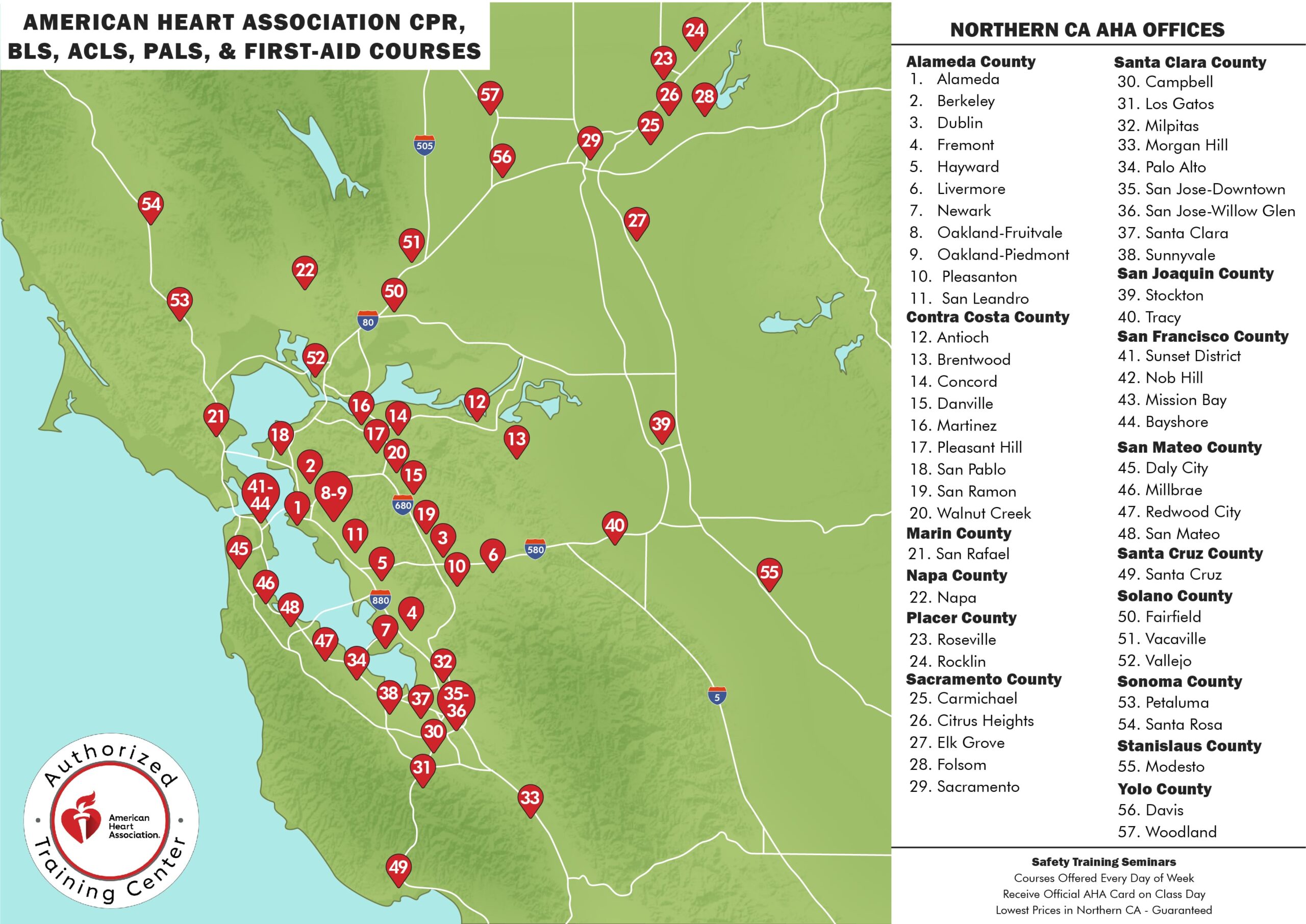
American Heart Association Course Registration
Safety Training Seminars offers American Academy of Pediatrics NRP Courses in the San Francisco Bay Area. Currently, we have three NRP training locations to serve our Bay Area clients including: Milpitas, Concord, and San Francisco. Also, we are always looking for NRP instructors. If you are interested in teaching NRP classes anywhere in Northern, CA, please contact our office.
How Do I Take An NRP Class?
The American Academy of Pediatrics offers an easy way for medical professionals to take the NRP course.
Three Easy Steps
1. Take the AAP online NRP course at home (a few hours).
2. Arrive to one of our local offices to practice and test with a live instructor.
3. Receive your NRP certification card on the day of the class.

About American Heart Association RQI
About NRP Classes In The Bay Area
NRP: Revolutionizing Neonatal Resuscitation
Introduction
Neonatal Resuscitation Program (NRP) is a critical lifesaving skillset and protocol designed to manage and care for newborns who require assistance immediately after birth. Developed by the American Academy of Pediatrics (AAP) and the American Heart Association (AHA), NRP is a globally recognized program that plays a pivotal role in reducing neonatal mortality rates. In this article, we will delve into the significance of NRP, its evolution, and its impact on newborn care.
The Evolution of NRP
Before the introduction of NRP, neonatal resuscitation practices varied widely, and the outcomes for newborns in distress were often unpredictable. Recognizing the need for standardized and evidence-based guidelines, the AAP and AHA established NRP in the early 1980s. Since then, NRP has undergone several updates to incorporate the latest medical knowledge and technology.
Key Components of NRP
- Teamwork and Communication: NRP emphasizes the importance of effective communication and teamwork among healthcare providers. The successful resuscitation of a newborn requires coordinated efforts from various professionals, including doctors, nurses, and respiratory therapists.
- Assessment and Stabilization: NRP teaches healthcare providers how to assess a newborn’s condition quickly and efficiently. This includes evaluating heart rate, breathing, and color, which are crucial indicators of the baby’s overall health.
- Ventilation and Chest Compressions: Proper ventilation is a cornerstone of neonatal resuscitation. NRP provides guidelines for effective bag-mask ventilation and, when necessary, chest compressions. These techniques are crucial for delivering oxygen and maintaining circulation in a newborn.
- Medications: NRP also covers the administration of medications like epinephrine, which may be required to support a distressed newborn’s heart rate.
- Special Considerations: The program acknowledges that each newborn is unique and may have specific needs. It addresses special situations such as preterm births, meconium-stained amniotic fluid, and congenital anomalies.
Impact on Neonatal Care
NRP has had a profound impact on neonatal care, leading to improved outcomes for newborns in distress. Here are some of the key ways in which NRP has made a difference:
- Reduced Mortality: The implementation of NRP guidelines has significantly reduced neonatal mortality rates. Healthcare providers trained in NRP are better equipped to respond swiftly and effectively to newborns in critical condition.
- Decreased Morbidity: NRP has not only lowered mortality rates but has also contributed to a decrease in neonatal morbidity. Timely and appropriate interventions during the critical moments after birth can prevent long-term health issues for newborns.
- Standardization: NRP has established a universal standard for neonatal resuscitation. This consistency ensures that healthcare providers worldwide are on the same page when it comes to saving newborn lives.
- Continuous Improvement: NRP is not static. It evolves with advancements in medical knowledge and technology. Regular updates to the program ensure that healthcare providers are always working with the most current and effective resuscitation techniques.
- Training and Education: NRP has become an essential part of medical education and training for healthcare professionals. It equips them with the skills and knowledge needed to handle high-stress situations during childbirth.
Challenges and Future Directions
While NRP has made significant strides in neonatal care, challenges persist. Access to training and resources can be limited in some regions, and not all healthcare providers are adequately trained in NRP techniques. Ensuring that NRP training is accessible to healthcare professionals worldwide remains a critical goal.
Additionally, as medical science continues to advance, NRP will need to adapt and incorporate new evidence-based practices to further improve neonatal outcomes.
Conclusion
The Neonatal Resuscitation Program (NRP) is a remarkable achievement in the field of neonatal care. It has revolutionized the way healthcare providers respond to newborns in distress, leading to reduced mortality and improved outcomes. As NRP continues to evolve and reach more healthcare professionals globally, it promises to play an even more significant role in saving the lives of newborns, reaffirming its status as a cornerstone of neonatal care.
Our Blog

Why CPR is Important in Healthcare
Cardio-pulmonary resuscitation (CPR) is a life-saving technique that everyone should know how to perform. It involves a series of actions designed to help someone who has stopped breathing or whose

7 Common CPR Myths Debunked
Cardiopulmonary resuscitation (CPR) is a life-saving technique that can help a person in the event of cardiac arrest. It involves chest compressions that are performed until medical professionals arrive or

Importance of Workplace CPR & First-Aid Training
Accidents can happen anytime and anywhere, even in the workplace. Although we may try our best to ensure a safe and healthy work environment, we can’t predict or prevent all


